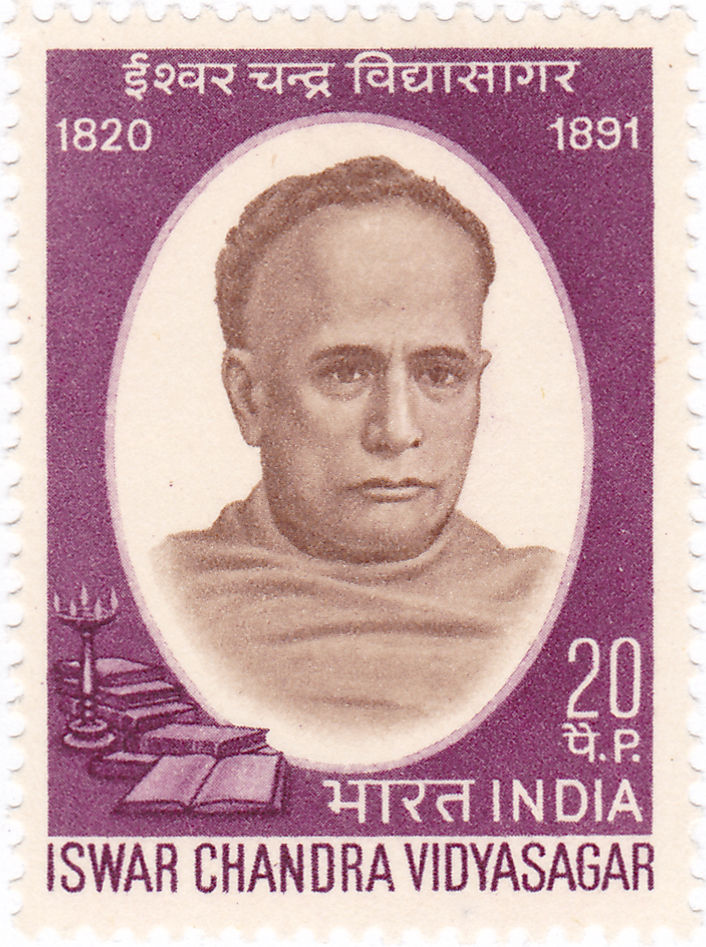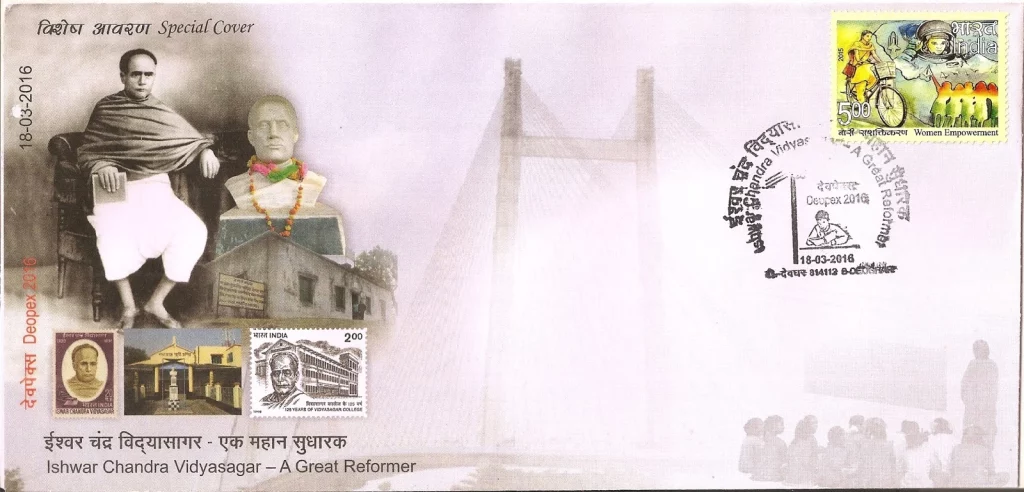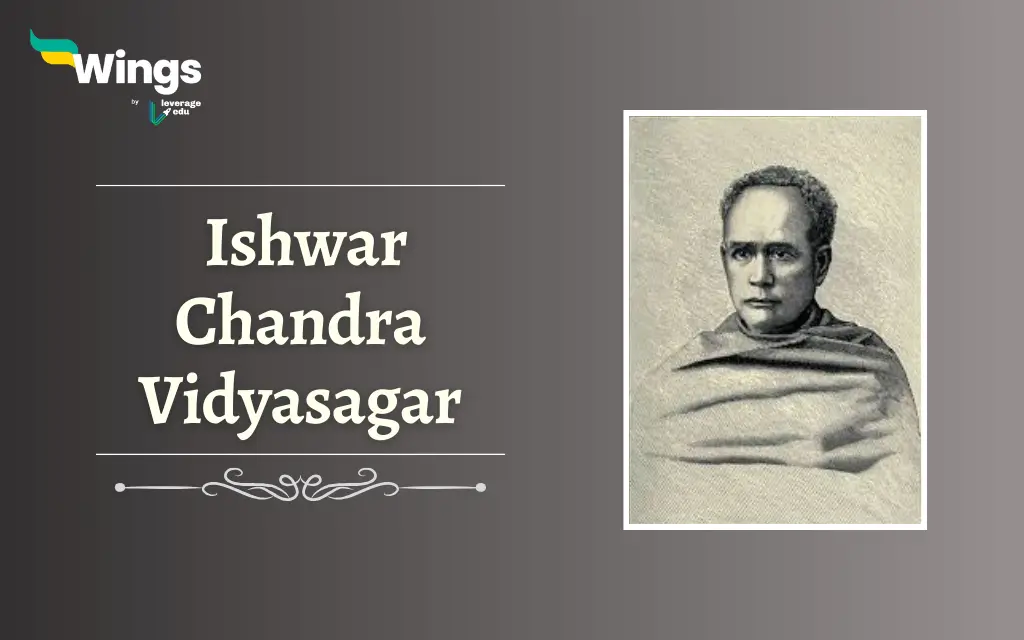In Indian history, one name that outshines when we talk about education and social reform is that of Ishwar Chandra Vidyasagar. He played a significant role in transforming the educational scenarios of India during the 19th century. Moreover, Vidyasagar believed in high moral values and was a renowned scholar, writer, translator, philanthropist and entrepreneur. The blog explores the life and contributions of this visionary leader and the figure of the Bengal Renaissance.
Contents
Who was Ishwar Chandra Vidyasagar?
Ishwar Chandra Bandyopadhyay was born on 26th September 1820 in the eastern part of West Bengal. He came from a very humble family from the village of Birsingha, presently known as Paschim Medinipur district. Moreover, his parents were Thakurdas Bandyopadhyay and Bhagavati Devi.
Additionally, Ishwar was an intelligent student and had an interest in acquiring knowledge from anywhere that he could. His passion for learning led him to Calcutta (now Kolkata). He joined the Sanskrit college as well as cleared the law examination.
Later, at the early age of 21, Ishwar joined as the Department Head Teacher of Sanskrit at Fort William College in the year 1841. At the age of 14, as per the customs prevalent at that time, he was married to Dinamani Devi and had a son named Narayan Chandra.
Vidyasagar simplified and rationalised the Bengali alphabet and wrote “Borno Porichoy”. These alphabets had remained unchanged since Charles Wilkins and Panchanan Karmakar had cut the first Bengali type in 1780. In addition, the alphabet by Ishwar is still used to teach Bengali literature and to beginners of the language. He came to be known as “The Father of Bengali Prose.”
- As a teacher, he shared the idea of learning the best of both Indian and Western philosophy.
- In the year 1850, he became the Principal of Sanskrit College and opened admissions for even non-Brahmin students.
- He was the first person to introduce the admission and tuition fees in Bengal.
- It was the Sanskrit College which honoured and conferred him with the title of “Vidyasagar” for his contribution.
Fun Fact – “Vidyasagar means Ocean of Knowledge”
What Social Ideas did Ishwar Chandra Vidyasagar Support?
Apart from Ishwar’s literary work and modernising education, he propagated many social reforms. He was an ardent supporter of Women’s education and Widow Remarriage.
- Women’s Education– One of Vidyasagar’s contributions was his relentless support for the importance of Women’s Education.
- During his time, educating girls was considered taboo in many parts of India.
- However, he diligently worked to empower women and transform society.
- In 1849, he became secretary of an innovative girls’ school called Bethune School.
- This school was a result of the various movements that arose for women’s education in the 1840s and 1850s.
- He also helped organise 35 girls schools, many of which were running at the expense of Vidyasagar, wherein he pointed out the importance of Girl Child Education.

- Widow Remarriage– Ishwar Chandra Vidyasagar was a staunch believer in widows getting married again.
- He saw teen and pre-teen girls getting widowed and leading a life of misfortune. To set an example, he married his son to a widow.
- Supporting Ishwar’s movement, he presented the Sanskrit texts and scriptures where widow remarriage was not considered a sin and was sanctioned.
- He also proved that polygamy was never endorsed.
- Ishwar’s agitations bore fruit when the Hindu Widow’s Remarriage Act of 1856 was passed during the rule of the East India Company.
- Lord Dalhousie drafted the act, and Lord Canning passed it before the Revolt of 1857.
Additionally, he tirelessly worked towards abolishing inhuman practices which were prevalent in those times, such as polygamy, child marriage and the caste system.
Also Read: My Experiments With Truth: Autobiography of Mahatma Gandhi
What were the Intellectual Contributions of Ishwar Chandra Vidyasagar?
Apart from his linguistic work in “Borno Parichay”. Some Literary works by Ishwar Chandra Vidyasagar were:
- For the Prohibition of Polygamy, he wrote “Bahubibaha” in 1871.
- On the lines of Widow Remarriage, he wrote “BidhabaBibaha” in 1855.
- Ishwar Chandra Vidyasagar also started the Bengali newspaper Shome Prakash in the year 1858.
Some more include Shakuntala, Sitar Banabash, Bangalar Itihash, Charitabali, Nitibodh, etc.
Also Read: Social Reformist Jyotiba Phule: Biography, History, Facts
What was the Impact of Ishwar Chandra’s Idea?
Furthermore, the impact of Ishwar Chandra Vidyasagar’s work can still be felt in India.
- His efforts to promote the importance of education in life, especially for women and bring them to live in equal parity were a forward-looking vision and impacted the education system significantly.
- Ishwar worked for female emancipation and devoted his entire life to the specific cause of Widow Remarriage, which was a great advancement of Raja Ram Mohan Roy’s idea of ascetic widowhood.
- Also, his work in Bengali teaching has become an integral part of Bengali education.

Ishwar Chandra Vidyasagar’s Death
Ishwar Chandra Vidyasagar spent his later life staying with the Santhal Tribe, and owing to ill health, he died at the age of 70 on 29 July 1891. To honour him, the India Post issued stamps in 1970 and 1998. And in 2004, he was ranked in the 9th position in the BBC’s Poll of Greatest Bengali of all time.
FAQs
Ishwar Chandra Vidyasagar is famous for his contributions to education and social reforms during the 19th century. Vidyasagar was a key figure in the introduction of the Widow Remarriage Act of 1856.
Vidyasagar contributed to women’s education and society through the Widow Remarriage Act.
The title of Vidyasagar was given by the Sanskrit College, which honoured him for his contribution to education, especially women’s education.
The Widow Remarriage Act was the culmination of the Women’s Movement, wherein widows were allowed to remarry.
The other name of Ishwar Chandra Vidyasagar is Ishwar Chandra Bandyopadhyay.
Relevant Blogs
| Lord Lansdowne | Lord Irwin |
| Lord Lytton | Lord Chelmsford |
| The Government of India Act 1919 | Kiran Bedi |
| Morley-Minto Reforms | Gandhi Irwin Pact (1931) |
| Bengal Partition | Birsa Munda |
We hope you liked our blog on Ishwar Chandra Vidyasagar. If you want to read more articles like this, you can get Study notes on the Modern History of India here. Also, you can visit our general knowledge page on Indian History!
 One app for all your study abroad needs
One app for all your study abroad needs














